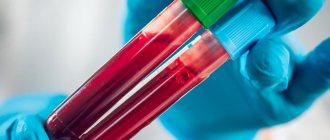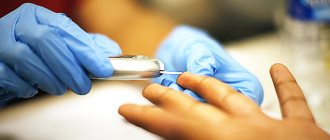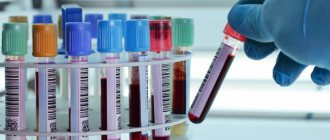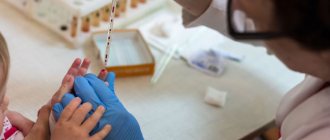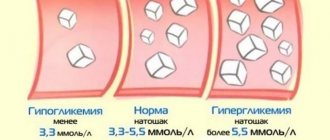How to treat
If fasting glucose is impaired, the doctor prescribes treatment, but the basis of the recommendations is to change your lifestyle.
The most important condition for improving health is compliance with dietary measures. Glycemia is controlled through a balanced diet. Patients should carefully select foods with a low glycemic index, eat often, but in small portions, add “complex” carbohydrates to their diet. It is very important to exclude sugar, white bread, and pastries from the diet. It is necessary to significantly reduce fat intake, and protein foods must be present in sufficient quantities
Increasing physical activity is vital. Proper nutrition and adequate physical activity will lead to weight loss. Foreign researchers claim that if a person takes short walks every day, the risk of diabetes decreases by 2-3 times. In more complex cases, sugar levels are lowered with medications.
People often do not pay attention to the symptoms of glycemia, and sometimes mistakenly consider them signs of other diseases, so it is important to periodically do a blood sugar test. This is simply necessary for people who have a hereditary predisposition to diabetes; they must undergo tests with sufficient regularity.
For patients, a special analysis may be prescribed - a glycemic profile.
Its purpose is to determine the daily fluctuation of glucose, this is necessary for prescribing treatment. The glycemic profile is determined by a special blood test repeatedly during the day at certain intervals. During this period, a person eats according to a schedule, but tries to follow the usual diet and portions.
Sources
- https://endoco.ru/gormon_fon/fynk_gorm/glikemiya-chto-eto-takoe.html
- https://www.neboleem.net/glikemija.php
- https://diabethelp.org/meryaem/glikemiya.html
- https://zdorovi.net/bolezni/glikemija.html
- https://mebelmerx.ru/narushenie-glikemii-natoshhak-dieta/
- https://BezInsulina.ru/oslozhneniya/narushenie-glikemii-natoschak.html
[collapse]
Impaired fasting glycemia
Impaired fasting glucose, in accordance with findings published by the American Diabetes Association, has come to be classified as a prediabetic state with a risk of further development of this disorder into diabetes and an increased chance of developing cardiovascular diseases. Previously, this category of carbon metabolism disorders was not included in the diagnostic criteria for diabetes and did not appear in the classifications of this disease.
We can talk about impaired fasting glucose if, according to the results of a morning blood test for sugar, the volume of glucose in capillary or venous blood was in the range of 5.6-6.1 mmol/l or 6.1-7.0 if not whole blood was analyzed blood, but only its plasma. If the tests revealed impaired glycemia of this type, it is recommended to check with the patient whether they have recently taken medications that affect hormones such as adrenaline, glucagon, insulin or steroid hormones, the use of which could worsen and distort the results of the study. It is also worth asking again whether the test was really taken on an empty stomach, that is, whether there were any meals in the last 12 hours before the test was taken. If it turns out that the results of the examination could not be influenced by external factors, or the patient is a pregnant woman, it means that her fasting blood glucose levels may correspond to normal values, an additional analysis is recommended - a glucose tolerance test.
Pharmacies once again want to make money from diabetics. There is a smart modern European drug, but they keep quiet about it. This.
This test is performed in cases where diabetes has not been diagnosed, but there is a suspicion of abnormal fasting glucose levels. Otherwise, the desire to confirm abnormal glycemia may lead to glycemic shock in the patient. The test is organized in this way: a blood test is taken on an empty stomach, then you are asked to consume 75 grams of glucose dissolved in 1 glass of water for 5 minutes. For children, the glucose concentration should be 1.75 g/kg body weight. After 2 hours of waiting, a secondary blood sample is taken. According to the results of the test carried out after the load, a sugar disorder can be judged if its concentration in the blood exceeded 7.8 mmol/l, but did not reach 11.1 for plasma and 7.3-10.6 for whole blood. If the obtained value is below this limit, then the disorder is considered not detected; above it, diabetes is diagnosed.
Methods for determining sugar content
To determine the level of glycemia in modern medicine, two main methods are used.
- Blood sugar test.
- Glucose tolerance test
The first type of analysis is based on determining the patient's glycemic level in blood taken on an empty stomach. Blood is collected from a person's finger. This is the most common way to determine glycemia in humans.
An elevated glycemic level does not always indicate that a person has diabetes. Often additional diagnostics may be performed to confirm this diagnosis.
In order to make sure that the diagnosis is correct, several more blood tests are prescribed for sugar, we can say that this is a kind of test for diabetes. During the period of testing, the patient must completely avoid the consumption of medications that affect hormonal levels.
To obtain more reliable data, the doctor additionally prescribes a test for glucose tolerance. The essence of this analysis is as follows:
- The patient takes a fasting blood test;
- Immediately after the analysis, 75 ml is taken. glucose soluble in water;
- An hour later, a repeat blood test is done.
If the blood glucose level is in the range of 7.8-10.3 mmol/l, then the patient is sent for a comprehensive examination. A glycemic level above 10.3 mmol/l indicates the presence of diabetes mellitus in the patient.
Possible consequences of the disease
The connection between glycemia and diabetes is quite close; many people do not know why this disease is dangerous. They do not ask this question, especially when the pathology is just beginning to develop. The person is not sick yet, but there are already changes in his blood.
As a rule, the latent form of diabetes is accompanied by a slight increase in blood sugar levels. And this is a fairly important sign that indicates that the disease is beginning to develop.
Medical professionals do not consider glycemia a disease. Rather, it is a consequence of any other pathology, which can lead to more complex disorders in the body.
Diabetes mellitus is a disease that develops as a result of improper functioning of the pancreas. It can also be caused by the hormone insulin, which is not enough in the body.
If the blood glucose level is exceeded, carbohydrate metabolic processes are disrupted. First, the pathology affects the cells, and then the entire body as a whole. Once carbohydrate metabolism changes, protein, lipid and water balance is disrupted.
The danger is that blood is a transport system in the human body; an excess or deficiency of any of its components will immediately make itself felt.
Thus, the nutritional process of the cells will be disrupted, they will perform their functions worse, and subsequently die. For the skin, this means dryness, lifelessness, peeling, as cells die . Vision will deteriorate and hair will begin to fall out. Poor wound healing will lead to the appearance of boils and carbuncles.
For the circulatory system, the consequence will be dangerous and unwanted atherosclerosis. Most often, disorders affect the arteries in the legs. Poor nutrition and lack of oxygen will cause the death of not only cells, but also tissues. The result will be lameness or gangrene.
Symptoms of hyperglycemia
Typically, an increase in glucose levels in the body is observed in patients with diabetes or in people with a predisposition to this disease. Sometimes hyperglycemia may not manifest itself, and its symptoms will resemble other diseases.
Often, an increase in glycemia is caused by constant stress, constant consumption of high-carbon foods, overeating, and a sedentary lifestyle. The main symptoms of glycemia characterized by high sugar levels include:
- constant feeling of thirst;
- itching of the skin;
- frequent urge to urinate;
- weight loss or gain;
- constant feeling of fatigue;
- irritability.
When the blood glucose level is critical, short-term loss of consciousness or even coma may occur. If a blood sugar test reveals that its level is elevated, this does not indicate diabetes.
Perhaps this is a borderline state that signals a disruption in the functioning of the endocrine system. In any case, impaired fasting glucose should be examined.
Hypoglycemia
The critical indicators of hypoglycemia, at which loss of consciousness occurs, are 2.8 mmol/l. When there is a deficiency of glucose, the body experiences energy starvation and the brain lacks nutrients. This condition threatens a person with hypoglycemic coma.
Causes
A decrease in sugar below the normal level of 3.3 mmol/l may be due to the following reasons and may occur in diabetes mellitus due to:
- The presence in the body of a diagnosed (or undiagnosed) hormonally active tumor (insulinoma), which produces insulin in excess quantities;
- Incorrectly prescribed and self-administered insulin therapy with short-acting insulins for type 1 diabetes or overdose of glucose-lowering tablets for type 2 disease.
- Non-compliance with the diet, including untimely eating after an insulin injection.
- Excessive sports (other physical) activities that do not correspond to the physical capabilities of a diabetic.
- Inappropriate use of alcohol.
In people who do not suffer from diabetes mellitus, hypoglycemia is due to the following reasons: weakness of the body in the postoperative period, renal, hepatic or heart failure, hypothalamic-pituitary diseases, in particular, when the production of hormones is impaired (adrenocorticotropin, prolactin, somatotropin, etc.), deficiency corticosteroids (adrenal hormones).
Other factors that provoke a decrease in glucose levels: chronic alcoholism, physical overexertion, unhealthy eating behavior (unbalanced diets, overeating after prolonged abstinence from food, fasting), cachexia (depletion of the body), the menstrual phase of the ovarian-menstrual cycle in women. Reverse hypoglycemia can occur as a reaction of the body to the intake of a large amount of fast carbohydrates (sweets) on an empty stomach.
Hypoglycemia in newborns occurs due to:
- heart defect in an infant;
- oxygen starvation (asphyxia) during delivery;
- intrauterine infection;
- sepsis.
Also in case of a pathological condition of the baby, characterized by the body’s inability to break down glucose.
Symptoms
The intensity of clinical signs of low blood sugar appears depending on the stage of hypoglycemia. Mild symptoms: dizziness, cephalgic syndrome (headache), hyperhidrosis (often with cold sweat), low blood pressure (blood pressure), astheno-vegetative syndrome, decreased visual acuity, neuropsychological disorders associated with increased emotional background ( anxiety, fussiness, psychological excitability), rapid, rhythmic contractions of the muscle fibers of the legs and arms (trembling or tremor), polyphagia.
Moderate symptoms:
- unstable psycho-emotional state;
- decrease (absence) of adequate concentration of attention (absent-mindedness);
- asthenia (neuropsychological weakness);
- uncontrolled muscle contraction (convulsive syndrome);
- disturbance of the rhythmic functioning of the heart;
- decreased sensitivity (sensitivity);
- slow speech function;
- nausea;
- ataxia (impaired coordination);
- pale skin;
- impaired swallowing function (dysphagia).
Symptoms of the severe stage:
- convulsions;
- mydriasis (dilated pupils);
- lack of sensory awareness;
- loss of brain activity (soporous state);
- areflexia (decreased or absent reflexes);
- short-term loss of consciousness (fainting).
Important! The manifestation of severe symptoms of hypoglycemia requires emergency medical attention. Otherwise, a coma may occur. .
Causes and symptoms
There are 2 types of glucose disorders: hypoglycemia is characterized by low blood sugar, and hyperglycemia by high blood sugar. Impaired glycemia can appear for various reasons:
- The most common cause is tumors that occur spontaneously or are part of another disease.
- Smoking cigarettes or drinking alcohol may cause fasting blood glucose.
- Sometimes the cause is liver disease.
- The disorder occurs due to excess weight, due to changes in lifestyle (significant dietary restrictions, increased physical activity).
- Children's pathology can be congenital (insufficient liver function).
- Increased sugar levels are common in people with diabetes. They have a lack (or absence) of their own insulin, and therefore glucose levels rise after eating.
There are several types of hyperglycemia. Physiological occurs after a meal rich in carbohydrates. This is a normal process, but it can become pathological if such foods are abused. Postprandial glycemia is characterized by the fact that after a standard meal, the sugar level rises to critical values. There are also emotional, hormonal and chronic types.
Symptoms of hyperglycemia are as follows:
- increased thirst;
- itchy skin;
- frequent urination;
- increased irritability;
- rapid development of fatigue;
- insurmountable hunger;
- weakness;
- violation of movement coordination;
- loss of consciousness and even coma are possible.
Hypoglycemia can also appear in healthy people with an excessively meager diet and significant physical activity. If insulin doses are incorrect, the condition can occur in patients with diabetes. These conditions are quite dangerous for the human body.
Signs of decreased fasting blood glucose are as follows:
- increased sweat production;
- tingling on the lips and fingertips;
- unnatural hunger;
- increased heart rate;
- shiver;
- pallor;
- weakness.
With pronounced disorders, additional symptoms may be observed: severe headache, vascular spasms, double vision and other signs of a central nervous system disorder. Sometimes fasting blood glucose results in insomnia and depression.
Hypoglycemia
With this clinical syndrome, the blood glucose level decreases sharply. It may appear due to a too strict diet with excessive physical activity. The main ones are:
- severe malaise (weakness and slight trembling throughout the body);
- profuse sweating;
- state of anxiety;
- nausea;
- feeling of fear;
- impaired coordination of movements;
- decreased vision;
- speech apparatus disorder;
- feeling of extreme hunger;
- convulsions;
- loss of consciousness.
These symptoms require consulting a doctor. It is possible that glucose levels may drop to a critical level. Inactivity in this condition can lead to coma.
People often treat this condition carelessly and are unaware of the disruptions occurring in the body. And only when undergoing a medical examination, in particular, after donating blood for sugar, is hypoglycemia accidentally discovered.
The most common cases of hypoglycemia are observed in type 2 diabetics. A condition where sugar levels are too low is extremely dangerous; it is fraught with serious changes in the brain, which can cause death.
This condition is characterized by malabsorption syndrome, the essence of which is the absence of the required amount of enzymes for better absorption of nutrients obtained from food.
The essence of this disease is that there is less glucose in the blood than insulin. The following factors can provoke this condition:
- error in insulin dosage;
- use of glinides or sulfonylureas;
- poor quality syringe;
- inaccurate glucometer readings;
- Prescribing the wrong dose of drugs containing sugar;
- unauthorized increase in insulin dose by the patient;
- incorrect administration of insulin (not under the skin, but into the muscle);
- introduction of a new medication;
- liver and kidney disease;
- not “long” insulin, but “short” insulin was introduced;
- hormonal disbalance;
- state of pregnancy, breastfeeding, postpartum period.
This disease is quite insidious in that if the glucose level is less than 2.2 mmol/g, the patient may not feel any discomfort. Therefore, the doctor’s main recommendation is strict monitoring of the condition with periodic checking of sugar levels, despite the absence of symptoms.
For those suffering from glycemia due to diabetes, it is necessary to adjust their behavior. Due to possible loss of consciousness, a person may be injured. Such patients are not allowed to perform work on which the lives of other people depend, and they are also contraindicated to drive a car.
Some diabetics behave too carelessly and ignore the doctor's advice, especially if they do not feel any signs of illness. This is very reckless behavior, which often ends in loss of consciousness and falling into a coma.
This video describes all the symptoms of hypoglycemia, as well as the causes of low blood sugar, and what to do in case of attacks of malaise.
High and low glycemia: what is it?
If the permissible values are exceeded, hyperglycemia occurs. This condition primarily corresponds to people with diabetes. Due to the lack of their own insulin, the sugar ratio in the blood of these patients increases after eating.
And its deficiency in the body is called hypoglycemia. It should be noted that this condition is also typical for completely healthy people with a strict diet or excessive physical activity. In addition, patients with diabetes may also suffer from hypoglycemia if there is an overdose of a glucose-lowering drug or the dosage of insulin is incorrectly selected.
Daily glycemia, oral glucose tolerance test and HbA 1c
As follows from the definition of diabetes mellitus, its diagnosis is exclusively biochemical and is based on the results of a study of blood glucose concentration. The only (necessary and sufficient) diagnostic criterion for diabetes mellitus is an elevated blood glucose level (Table 1).
In the case of severe metabolic disorders, its diagnosis is not a problem. It is established in a patient with obvious symptoms of diabetes (polyuria, polydipsia, weight loss, etc.), if at any random time point during the day the glucose level in the venous blood plasma exceeds 11.1 mmol/l.
But diabetes can also develop gradually, without obvious clinical symptoms at the onset of the disease and manifest itself only by moderate hyperglycemia on an empty stomach and after ingesting carbohydrates (postprandial hyperglycemia). In this case, the criteria for diagnosing diabetes mellitus are fasting glucose levels and/or 2 hours after a standard carbohydrate load - 75 g of glucose orally. However, the problem is that the criteria for diagnosing carbohydrate metabolism disorders in the so-called oral glucose tolerance test (OGTT) are often revised. In addition, the values used for diagnosing borderline diabetes conditions—impaired glucose tolerance (IGT) and impaired fasting glucose (IFG)—have not yet been finally agreed upon by the international diabetes community. Since the diagnosis of a disease predetermines its treatment, we will discuss this problem in more detail.
Glycemic breakpoints in OGTT, separating healthy people from people with impaired carbohydrate metabolism, are selected to minimize the risk of developing microvascular complications associated with impaired carbohydrate metabolism. Special studies[1] show that the risk of developing diabetic retinopathy increases significantly when the fasting plasma glucose level exceeds 6.0-6.4 mmol/l, and after 2 hours in OGTT exceeds 10.3 mmol/l and when glycated hemoglobin exceeds 5.9-6%. Based on these data, the American Diabetes Association Expert Committee on the Diagnosis and Classification of Diabetes in 1997 revised the previously established criteria for impaired carbohydrate metabolism towards their reduction. In addition, additional data analyzes were performed to minimize discrepancies in the predictive value of fasting and 2-hour OGTT blood glucose levels for microangiopathy. As a result, the following threshold values of glucose levels in venous blood plasma were selected for the diagnosis of diabetes mellitus: on an empty stomach - 7.0 mmol/l, and after 2 hours - 11.1 mmol/l. Exceeding these indicators indicates diabetes mellitus. They were adopted by WHO in 1998 for the diagnosis of diabetes in men and non-pregnant women (Alberti KG et al., Diabet Med 15:, 1998).
Impaired fasting glucose
Glucose is a unique source of energy for cells and tissues; it enters the body from food and is consumed in three ways: it goes directly to energy and plastic needs, and is converted into fat and glycagen (a polymer of glucose in the liver). Muscles, adipose tissue, heart and liver use glucose only when there is a sufficient level of insulin; when there is a lack of glucose, they either use their glucose stores or switch to fatty acid oxidation (insulin-dependent tissues). Strategically important organs: the brain, kidneys, nervous structures, gonads (ovaries and testes) and red blood cells use glucose regardless of the presence or absence of insulin.
. Sweet food is addictive, comparable in strength to heroin!
In case of fasting, two processes are triggered: in the liver, glycogen is converted into glucose; in adipose tissue, triacylglycerides are hydrolyzed to glycerol and fatty acids, which are used by organs. Diabetes mellitus is similar in its development mechanism to permanent fasting.
Changes in metabolism in diabetes mellitus
Insulin is released into the bloodstream in a constant mode - basal secretion, and immediately when food enters the body - bolus secretion (postprandial). If there is, in principle, little insulin (type 1 diabetes), then insulin-independent tissues are in conditions of glucose deficiency in the intervals between meals, and insulin-dependent tissues completely switch to the utilization of fatty acids, at the same time the level of counter-insular hormones sharply increases, which strive to ensure normal glucose levels for the brain and other vital organs. The concentration of glucose in the blood rises, the person loses weight and is forced to eat frequently due to the risk of hypoglycemic coma.
In type 2 diabetes, there is a lot of insulin, but insulin-dependent tissues react poorly to it, so blood glucose increases; insulin-independent tissues usually do not need glucose, because Type 2 diabetes develops against a background of obesity and overnutrition, but insulin-dependent people use fatty acids in large quantities, fats are burned quite quickly, the result is weight loss and ketoacidotic comas during fasting.
. A sharp release of insulin after eating a large amount of sweet food causes hypoglycemia and impaired mental activity plus drowsiness. Physical activity neutralizes this effect, which is why it is customary for the Caucasian peoples to dance and show tricks with weapons after eating.
Insulin-independent tissues (nerves, brain, blood vessels and red blood cells) absorb glucose, which is abundant in the plasma in diabetes mellitus, which causes their damage: macro- and microangiopathy, polyneuropathy, glycosylation of hemoglobin with loss of its properties.
Why does fasting glucose occur?
Normally, at night, when there are no meals, small amounts of glycagen from the liver are converted to glucose and back under the influence of insulin and counter-insular hormones. The level of the latter increases sharply by 4-5 o’clock in the morning, and if insulin is released in insufficient quantities or the tissues do not respond to it, then a blood test will show excess glucose (more than 5.6 mmol/l). The analysis may be erroneous during night meals, prolonged fasting and a short period of sleep (during fasting, blood glucose returns to normal within 10 hours), stress, taking glucocorticoids and some other medications, and thyrotoxicosis.
If an elevated level of glucose is detected in your fasting blood, do not despair and do not panic! We recommend doing a repeat analysis or sugar curve, because this can be either an annoying misunderstanding or a sign of diabetes! An in-depth analysis and consultation with an endocrinologist in our clinic will help recognize diabetes in the early stages and prevent 90% of its complications.
Diabetes is not a disease, but a way of life, the main thing in which is knowledge and constant self-control! We can teach both the first and second to every patient.
How are glycemic levels regulated?
This is the area of responsibility of certain physiological processes. When you eat, sugar (glucose) enters the body. Its breakdown is carried out by insulin, which is produced by the pancreas. When the body works hard, it needs to use up more sugar. Accordingly, if there is insufficient intake from food, the glycemic level will decrease. If the pancreas does not produce the normal amount of insulin or it is not accepted by the body, then the glycemic level increases. It is also possible to regulate glycemia from outside: hypoglycemic drugs, insulin injections.
